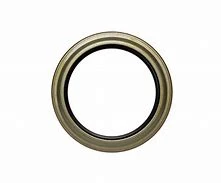Understanding Differential Axle Seal Functionality and Maintenance Tips for Optimal Performance
Understanding Differential Axle Seals Importance and Maintenance
Differential axle seals are critical components in any vehicle's drivetrain system. These seals serve as protective barriers, preventing the leakage of differential fluids while simultaneously keeping contaminants, dirt, and debris from entering the differential housing. A differential, which is an integral part of the drivetrain, allows for the smooth turning of wheels, particularly when navigating corners. Therefore, maintaining the integrity of differential axle seals is essential for efficient vehicle operation.
The Role of Differential Axle Seals
The primary function of differential axle seals is to retain axle lubricant within the differential housing. This lubricant is vital for ensuring smooth operation, cooling gears, and reducing friction. Without sufficient lubrication, the internal components of the differential can experience excessive wear, leading to potential failures that can be costly and unsafe.
Axle seals typically come in rubber or synthetic materials, engineered to withstand the harsh conditions within the differential environment, including high temperatures, pressure, and exposure to contaminants. Their design features include a lip that forms a tight seal against the axle shaft, thus minimizing the chance of leakage.
Signs of Differential Axle Seal Failure
Like any component in your vehicle, differential axle seals can wear out over time due to age, exposure to extreme conditions, or improper installation. Identifying the early signs of a seal failure can save you from more extensive damage and costly repairs. Here are some common signs
1. Fluid Leakage One of the most obvious indicators of a failing axle seal is a noticeable leak of differential fluid. This fluid is typically thick and may be brown or black. If you notice wet spots under your vehicle, it’s crucial to investigate promptly.
2. Unusual Noises A failing differential or insufficient lubrication can cause the internal components to grind against each other, resulting in unusual sounds such as whining or clunking.
3. Poor Handling If your vehicle feels unstable, particularly while turning, it may be a sign that the differential is not functioning correctly due to low fluid levels caused by a leaking axle seal.
4. Warning Lights Some modern vehicles have diagnostic systems that will trigger warning lights when there’s an issue with the drivetrain, including potential axle seal failure.
diff axle seal

Maintenance and Replacement of Differential Axle Seals
Regular maintenance checks can help prolong the life of differential axle seals. Routine inspections of the differential housing, along with checking fluid levels and looking for signs of leakage, should be part of any vehicle maintenance program. It’s also recommended to follow the manufacturer’s service schedule for differential fluid changes, as dirty fluid can contribute to seal deterioration.
If a differential axle seal does begin to fail, timely replacement is crucial. The process of replacing a seal involves
1. Drain the Differential Fluid Before any work can begin, the differential fluid must be drained to prevent further mess and contamination.
2. Disassemble the Necessary Components This often involves removing the axle shaft, which can require specific tools and expertise.
3. Remove Old Seal The old seal must be carefully extracted from its housing. This step can be challenging, as the seal may be tightly fitted.
4. Install New Seal The new differential axle seal should be installed precisely, ensuring it is snug against the axle shaft to prevent future leaks.
5. Reassemble and Refill Once the new seal is in place, reassemble all components and refill the differential with the appropriate lubricant.
Conclusion
Differential axle seals play an indispensable role in maintaining the efficiency and safety of any vehicle. By being aware of the signs of potential failure and adhering to a proactive maintenance approach, vehicle owners can ensure their differential systems operate smoothly and reliably. Remember, early detection is key to preventing more severe issues, making routine inspections and prompt repairs essential components of vehicle upkeep.
-
Understanding Automotive Oil Seals: Essential Components for Engine and Shaft Protection
News Jul.30,2025
-
The Importance of Heavy Duty Seals in Industrial and Residential Applications
News Jul.30,2025
-
Exploring Industrial Oil Seals: From Felt Oil Seals to TTO and CFW Solutions
News Jul.30,2025
-
Essential Guide to Oil Seals: From Radial to Metal-Cased Seals for Industrial Reliability
News Jul.30,2025
-
Choosing the Right Oil Seals and Gaskets for Industrial and Automotive Applications
News Jul.30,2025
-
Cassette Seals: Durable Sealing Solutions for Harsh Environments
News Jul.30,2025
-
Understanding the Front Main Engine Seal: Purpose, Maintenance, and Installation
News Jul.29,2025
Products categories















